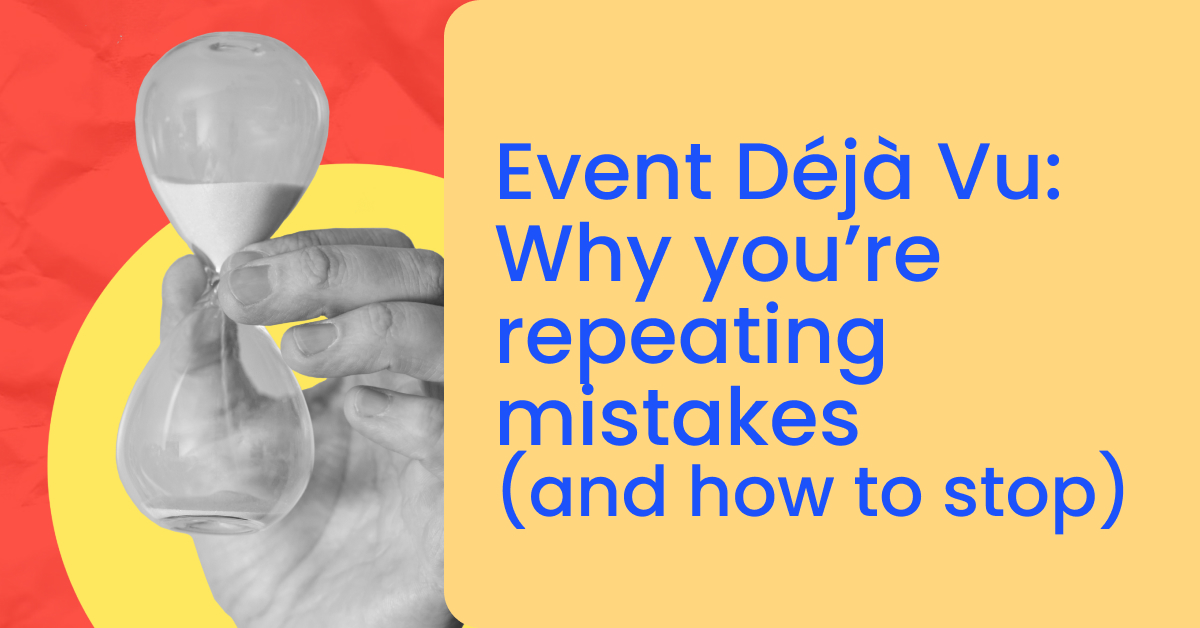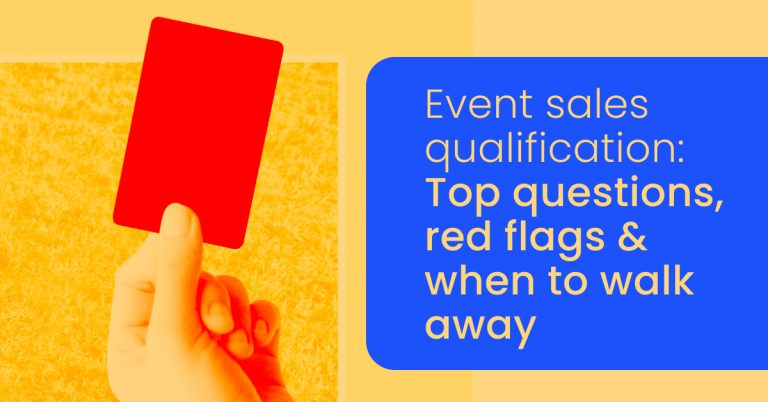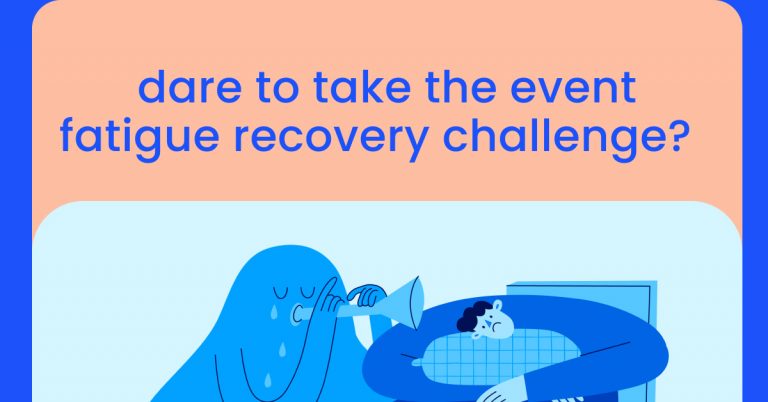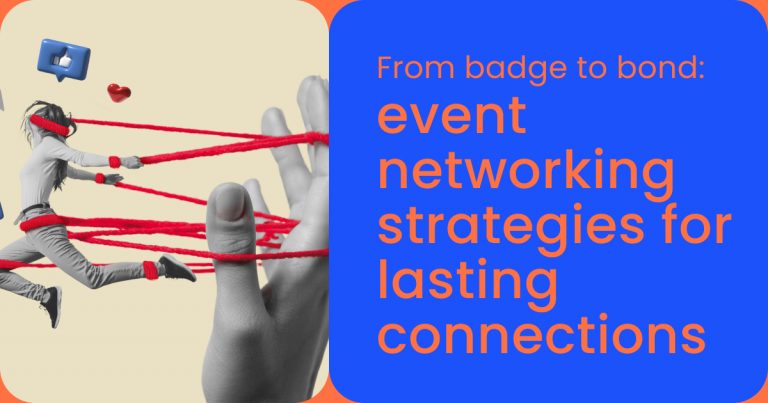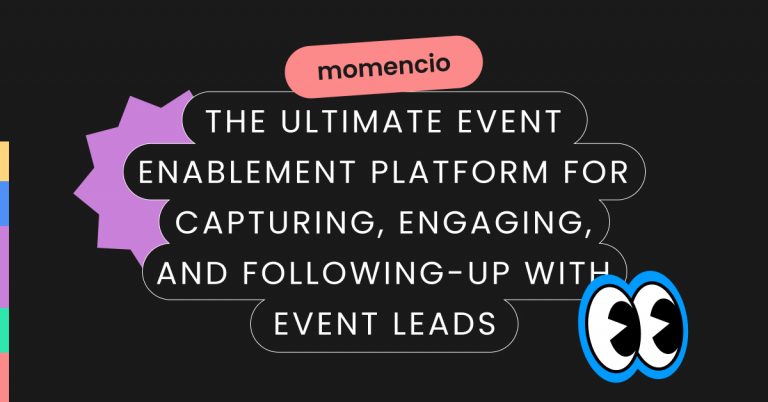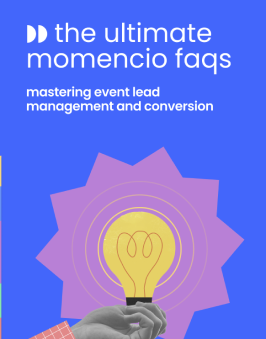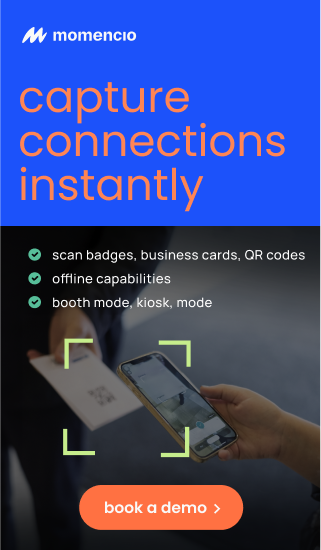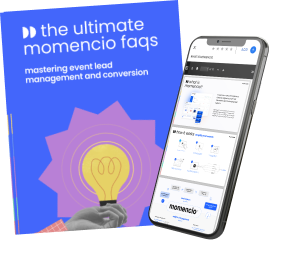TL;DR:
Many event professionals find themselves repeating the same event mistakes, leading to lost leads, lower ROI, and missed engagement opportunities. From failing to follow up with attendees to underutilizing data, these mistakes can cost companies thousands. In this guide, we’ll break down the five most common event blunders, explain why they happen, and provide actionable solutions to help you optimize future events.
Why do event planners keep making the same mistakes?
Events are high-stakes investments. In 2025, the global events industry was valued at $1,346.92 billion, yet many organizations still struggle with measuring ROI and engaging attendees effectively. Despite best efforts, planners often fall into repetitive patterns, making the same errors without realizing it.
Why? Because many event teams:
- Focus too much on logistics and not enough on engagement
- Fail to analyze past event data for insights
- Don’t have a streamlined system for post-event follow-ups
The good news? Breaking this cycle isn’t as hard as it seems. By understanding the most common event mistakes and applying the right fixes, you can turn your events into high-performing, ROI-driven experiences.
Mistake #1: Neglecting post-event follow-ups
The problem:
Many event planners put months into organizing a conference, trade show, or networking event, but once it’s over, the momentum is lost. A staggering 80% of leads captured at events are never followed up on. That’s thousands of potential sales conversations slipping through the cracks.

Why it happens:
- No structured follow-up strategy in place
- Lack of integration between event management and CRM tools
- Manual lead tracking that delays responses
- Assumption that attendees will reach out first
The fix:
The best way to fix post-event lead loss is to automate follow-ups and nurture leads while the event is still fresh in their minds.
- Use real-time lead capture tools – Platforms like momencio allow you to scan badges, capture attendee interests, and trigger follow-ups instantly.
- Personalize your post-event emails – Instead of a generic “Thanks for attending,” reference specific sessions or topics the attendee engaged with.
- Create post-event microsites – Offering a curated set of resources based on attendee interactions can significantly boost engagement.
- Follow up within 48 hours – Studies show that the faster you follow up, the more likely you are to convert a lead into a sale.
By automating and personalizing your post-event follow-ups, you’ll see a dramatic increase in conversion rates.
Mistake #2: Focusing only on attendee numbers, not engagement
The problem:
Measuring event success solely by attendance numbers is a dangerous trap. A packed event may look impressive, but if attendees aren’t engaging, networking, or taking action afterward, your ROI suffers.
Why it happens:
- Pressure to hit high registration numbers
- Lack of engagement strategies built into the event
- No post-event data analysis to measure interaction
The fix:
Shift your focus from quantity to quality with these strategies:
- Encourage interactive sessions – Use live polls, Q&A sessions, and gamification to keep attendees engaged.
- Track attendee behavior in real time – Monitor which sessions people attend, which booths they visit, and how long they stay engaged.
- Use AI-driven engagement tools – Event tech solutions, like momencio, help track interactions and trigger personalized recommendations for attendees.
- Follow up based on engagement, not just attendance – Instead of sending the same follow-up email to all attendees, segment them based on their participation level and tailor your outreach accordingly.
Engagement-focused events create stronger brand connections, higher lead conversion rates, and better event ROI.
Mistake #3: Underutilizing event data
The problem:
Event planners have access to tons of valuable data, but most don’t use it to improve future strategies. In fact, only 10% of event professionals say they consistently analyze event performance data.
Why it happens:
- Data is scattered across multiple platforms
- No clear framework for post-event analysis
- Teams aren’t trained to interpret engagement analytics
The fix:
Make data-driven decisions by:
- Consolidating data into one platform – A centralized system (like momencio) integrates lead capture, session tracking, and engagement analytics.
- Identifying key event performance metrics – Instead of just counting registrations, track session attendance rates, dwell times, booth interactions, and post-event conversions.
- Setting up post-event debrief meetings – Gather your team within a week after the event to review what worked, what didn’t, and adjust your strategy accordingly.
- Leveraging AI for predictive insights – AI-powered analytics tools can help forecast which leads are most likely to convert and guide your follow-up strategy.
Data is your most powerful tool for event optimization—use it to continuously improve and maximize ROI.
Mistake #4: Poor collaboration between sales and marketing teams
The problem:
Sales and marketing teams often work in silos, leading to missed opportunities when it comes to post-event conversions. Research shows that organizations with strong sales-marketing alignment achieve 38% higher sales win rates.
Why it happens:
- Lack of communication before, during, and after events
- Sales doesn’t have access to event engagement data
- Marketing focuses on lead generation, while sales focuses on closing deals—without a smooth transition
The fix:
- Ensure CRM and event tech integration – Tools like momencio connect sales and marketing by syncing event interactions directly into CRM systems.
- Define lead scoring criteria pre-event – Not all leads are equal. Work together to establish scoring criteria based on engagement levels and job titles.
- Schedule sales-marketing debrief meetings – Within 72 hours post-event, review captured leads and align on follow-up strategies.
- Create a seamless lead handoff process – Use automation to notify sales reps instantly when a high-priority lead interacts with event content post-event.
Aligning these two teams will accelerate conversions and improve overall event impact.
Mistake #5: Not adapting to evolving event technology
The problem:
Event technology is evolving fast, yet many planners still rely on outdated tools. According to recent reports, 69% of event professionals say they struggle with tech adoption.
Why it happens:
- Fear of change or high learning curves
- Budget constraints preventing investment in new tools
- Lack of awareness about the latest innovations
The fix:
- Adopt AI-powered engagement tools – AI can personalize attendee experiences in real-time, making interactions more meaningful.
- Use event apps for seamless experiences – Mobile-friendly event platforms help with networking, scheduling, and lead management.
- Leverage hybrid and virtual components – Even in-person events can benefit from virtual extensions, allowing for broader reach and engagement tracking.
- Prioritize automation – Automated workflows save time, reduce errors, and ensure consistent follow-ups.
By embracing cutting-edge event tech, you’ll reduce inefficiencies, improve engagement, and drive higher ROI.
Turn mistakes into opportunities
Every event professional has experienced setbacks—whether it’s missing key follow-ups, struggling with engagement, or failing to track meaningful event data. The good news? These mistakes aren’t roadblocks; they’re opportunities to refine your strategy and maximize your event ROI.
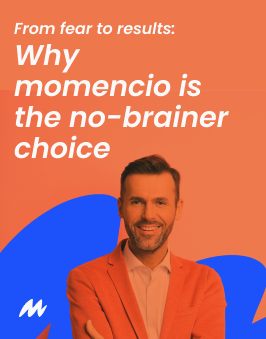
By identifying recurring issues and implementing targeted solutions, you can transform your events from logistical challenges into revenue-generating powerhouses.
- Post-event follow-ups matter: Don’t let leads go cold—engage attendees immediately with automated and personalized outreach.
- Quality over quantity: It’s not about how many people attend your event—it’s about how engaged they are. Prioritize interaction and meaningful experiences over simple headcounts.
- Data is your competitive advantage: If you’re not analyzing event data, you’re leaving valuable insights on the table. Leverage real-time analytics to optimize future events.
- Sales and marketing alignment is key: Your event strategy shouldn’t stop once the event is over. A seamless transition between marketing and sales ensures that your hard-earned leads turn into conversions.
- Embrace the right event technology: Investing in AI-driven insights, automation, and engagement platforms (like momencio) can eliminate inefficiencies and streamline the entire event process.
The events industry is evolving, and those who learn from their mistakes and leverage innovative solutions will gain a competitive edge. If you’re serious about maximizing the impact of your events, now is the time to adopt smarter strategies and eliminate the repetitive mistakes that hold you back.
Ready to break the cycle? Let’s make every event count
Avoiding event mistakes isn’t just about damage control—it’s about unlocking the full potential of your event strategy. By optimizing processes, aligning teams, and leveraging technology, you can create an event ecosystem that continuously improves.
But change doesn’t happen on its own. It requires a commitment to better event execution, a willingness to embrace new tools, and the ability to learn from past experiences.
Final thought
Every event is an opportunity to improve, refine, and elevate your strategy. The most successful event planners aren’t those who never make mistakes—they’re the ones who learn from them, adapt, and innovate.
Make today the day you stop repeating the past and start building future-proof events.
Let’s turn event mistakes into event wins. Book a free demo with momencio.
FAQs
- How do I measure if my event strategy is working?
- To measure the success of your event strategy, you should go beyond tracking attendance numbers. Focus on engagement metrics such as session participation, booth visits, and attendee interactions with your content. Evaluate lead quality and conversion rates to see if your event attracted the right audience and whether they progressed through the sales funnel. Post-event follow-up effectiveness is also crucial; monitor how many attendees respond to your outreach and engage further. Consider the impact on ROI by analyzing how many leads converted into actual sales. Lastly, gather attendee feedback through surveys and Net Promoter Score (NPS) to understand overall satisfaction. Using real-time analytics tools like momencio ensures you capture these insights efficiently.
- What’s the most common mistake event planners make?
- One of the most common mistakes event planners make is neglecting post-event follow-ups. Research shows that 80% of event leads are never pursued, resulting in significant lost revenue opportunities. This often happens due to the absence of automated systems, overwhelmed teams struggling with post-event tasks, and poor integration between event platforms and CRM tools. The solution is to automate your follow-up process with personalized email sequences, implement lead scoring, and use AI-powered engagement tracking tools to improve response rates and boost conversions.
- How can I improve post-event lead follow-ups?
- To improve your post-event lead follow-ups, start by using real-time lead capture tools like momencio to instantly qualify and categorize prospects during the event. Next, send personalized and segmented emails that reference specific sessions or topics attendees engaged with to increase relevance. Take advantage of AI-driven tracking to identify the most active leads and prioritize them for follow-up. Finally, ensure that you reach out to leads within 24 to 48 hours after the event, as prompt engagement significantly increases conversion chances. Remember, a consistent multi-touch follow-up strategy is key to turning event leads into sales.
- Why is attendee engagement more important than numbers?
- Focusing solely on the number of attendees can be misleading. Attendee engagement is a far more valuable indicator of event success because it reflects how deeply participants interact with your brand. Engaged attendees are significantly more likely to convert into customers and become loyal brand advocates. Quality engagement, such as participation in sessions, discussions, and networking activities, delivers a better return on investment than a large but passive audience. Additionally, fostering meaningful interactions increases attendee satisfaction and boosts the likelihood of repeat attendance and referrals, enhancing the long-term success of your event strategy.
- How do I ensure sales and marketing teams work together effectively?
- To align your sales and marketing teams effectively, start by integrating your event tech platform with your CRM. This ensures that both teams have access to real-time engagement data. Before the event, collaborate to define clear lead scoring criteria, so both sales and marketing know which leads to prioritize. Schedule a debrief meeting within 72 hours after the event to align follow-up strategies and share insights from attendee interactions. Use automated lead handoff systems like momencio to instantly notify sales reps when high-value leads engage with post-event content, keeping the momentum strong and improving conversion rates.
- What are the best ways to leverage event data for future planning?
- To fully leverage your event data, start by analyzing session attendance trends to understand which topics resonated most with your audience. Examine attendee behavior, such as dwell times and networking activity, to tailor future experiences. Review your post-event conversion rates to see how effectively leads moved through the sales funnel. Utilize this data to create audience segments for personalized outreach in upcoming events. Tools like momencio automatically collect and analyze event data, providing actionable insights that help you refine your strategies and optimize future event outcomes.
- How do I prevent technology failures from ruining my event?
- Preventing technology failures requires thorough preparation and reliable solutions. Always conduct a full systems check before your event to confirm that registration platforms, apps, and engagement tools are working correctly. Prepare backup plans, such as alternative internet connections and spare devices, and ensure your tech support team is ready to troubleshoot any issues. Use user-friendly event platforms to minimize errors and provide your team with adequate training to manage potential technical challenges. Investing in robust, well-tested technology reduces the risk of disruptions and ensures a smooth experience for your attendees.
- What’s the best way to encourage networking at events?
- Encouraging networking at events starts with creating intentional opportunities for attendees to connect. AI-driven matchmaking tools like momencio help suggest relevant contacts based on attendee interests, making it easier for participants to find meaningful connections. Structured networking sessions, such as speed networking or industry-specific meet-ups, foster direct engagement. Enabling in-app messaging allows attendees to communicate before, during, and after the event, extending the networking window. Adding gamification elements, like leaderboards or interactive challenges, also motivates attendees to engage with others, enhancing both satisfaction and event ROI.
Interesting facts from research
- Around 80% of sales require five or more follow-up activities to close the deal, yet most companies abandon follow-up after just one or two attempts.
- 63% of marketers report that personalized experiences increase customer engagement significantly.
